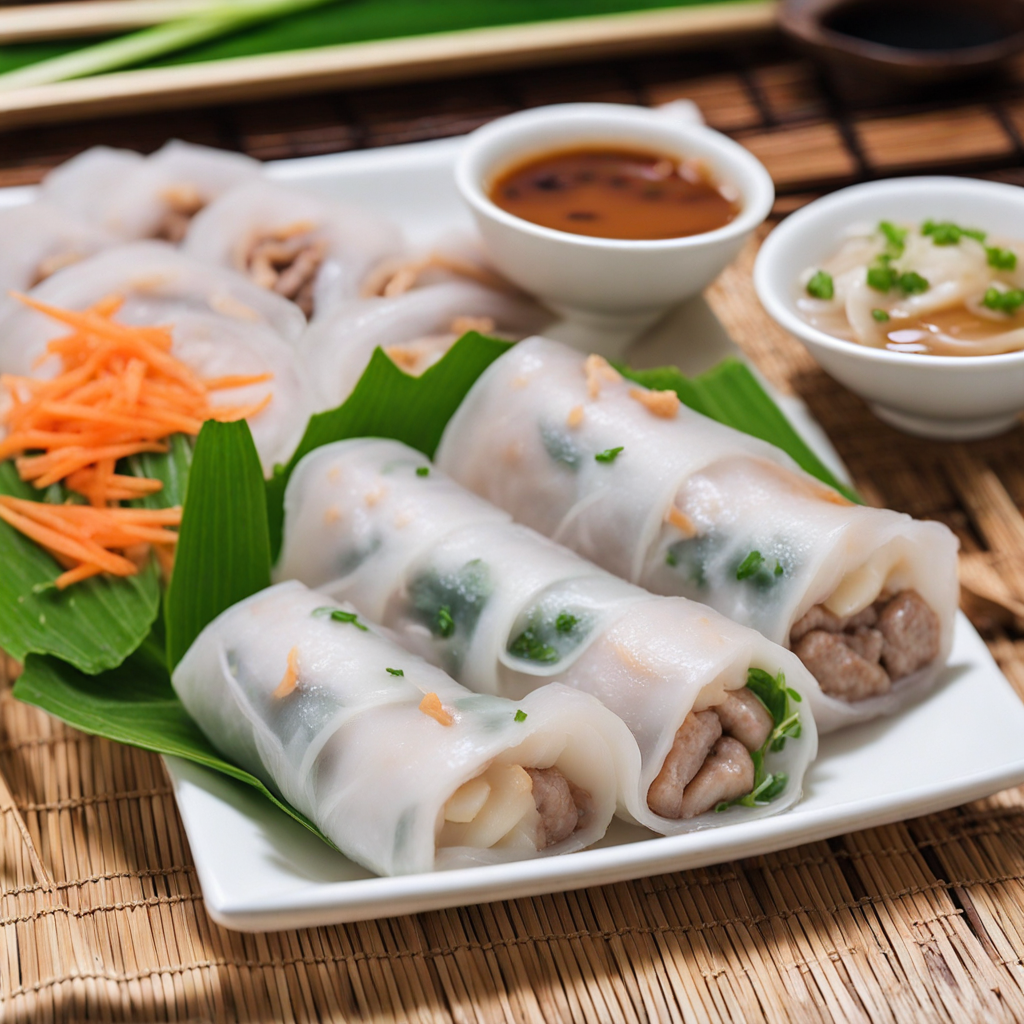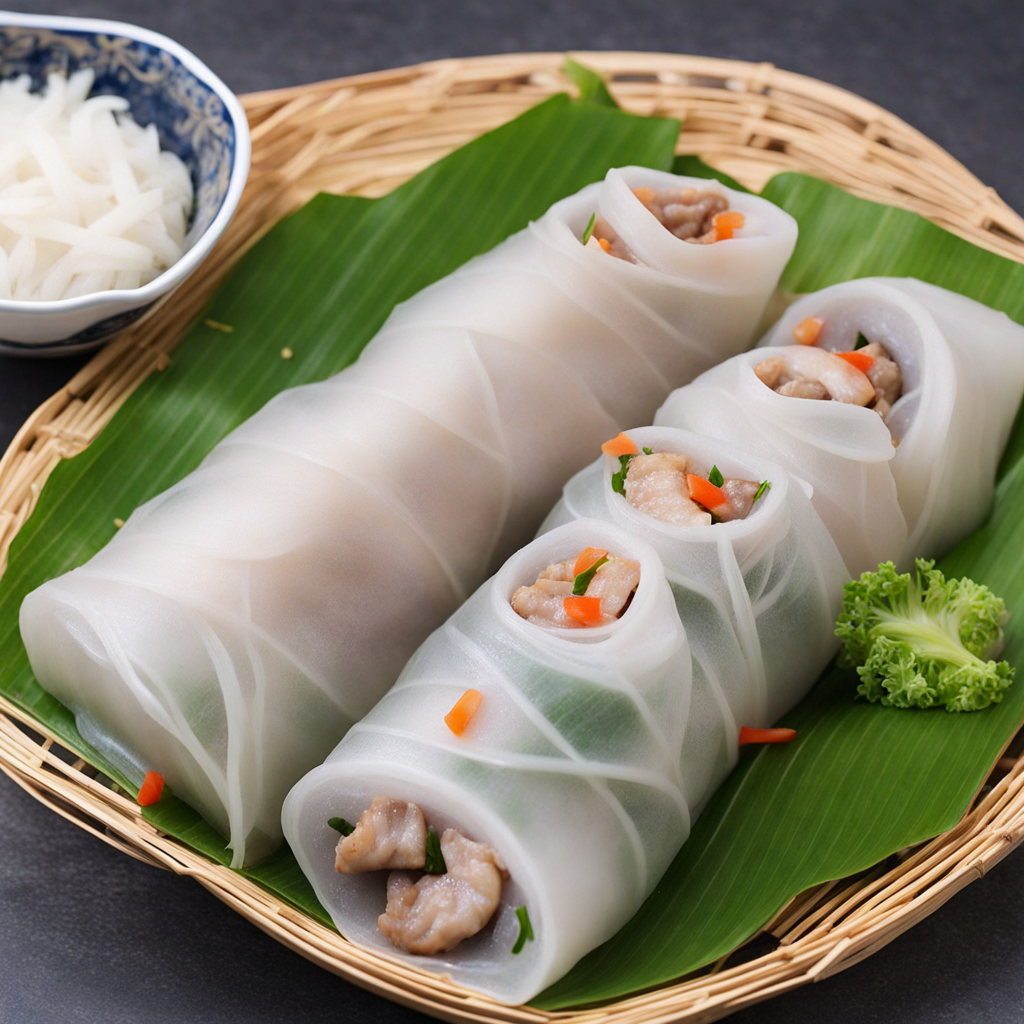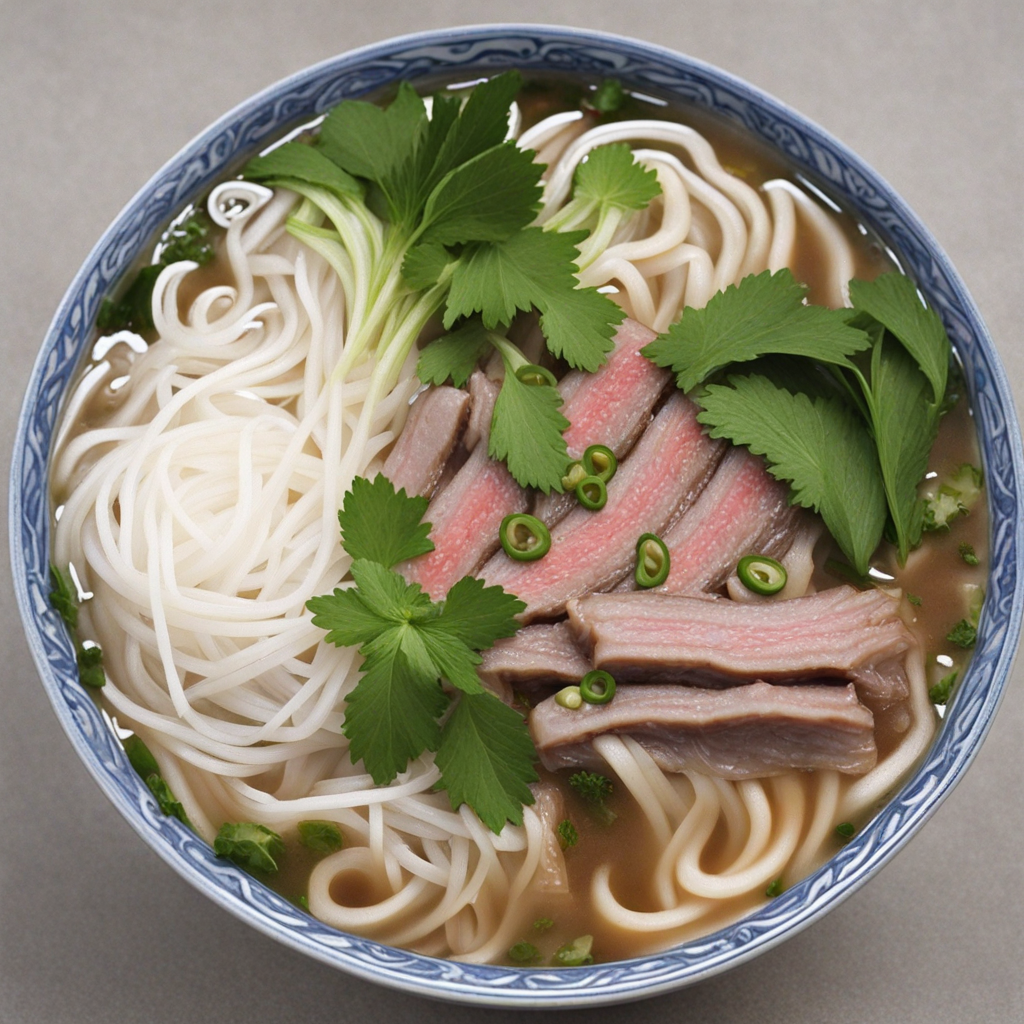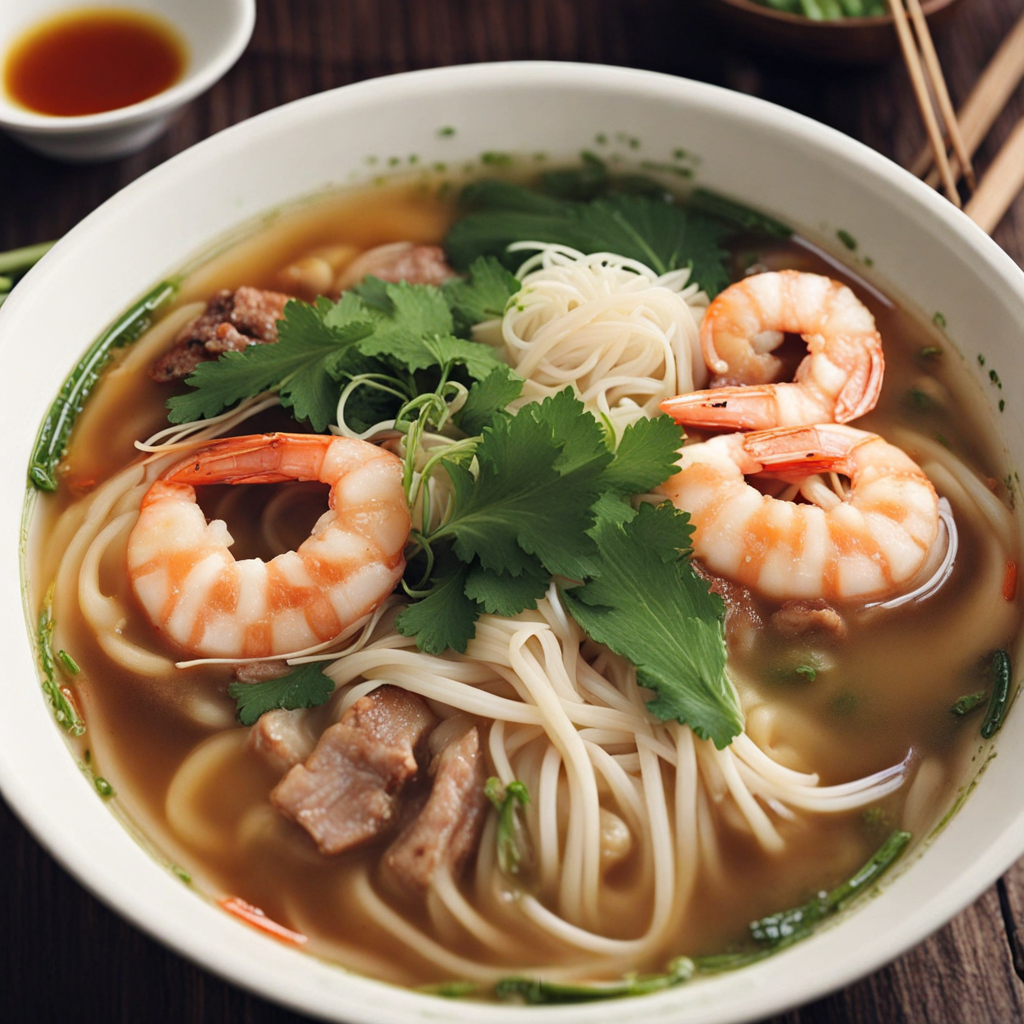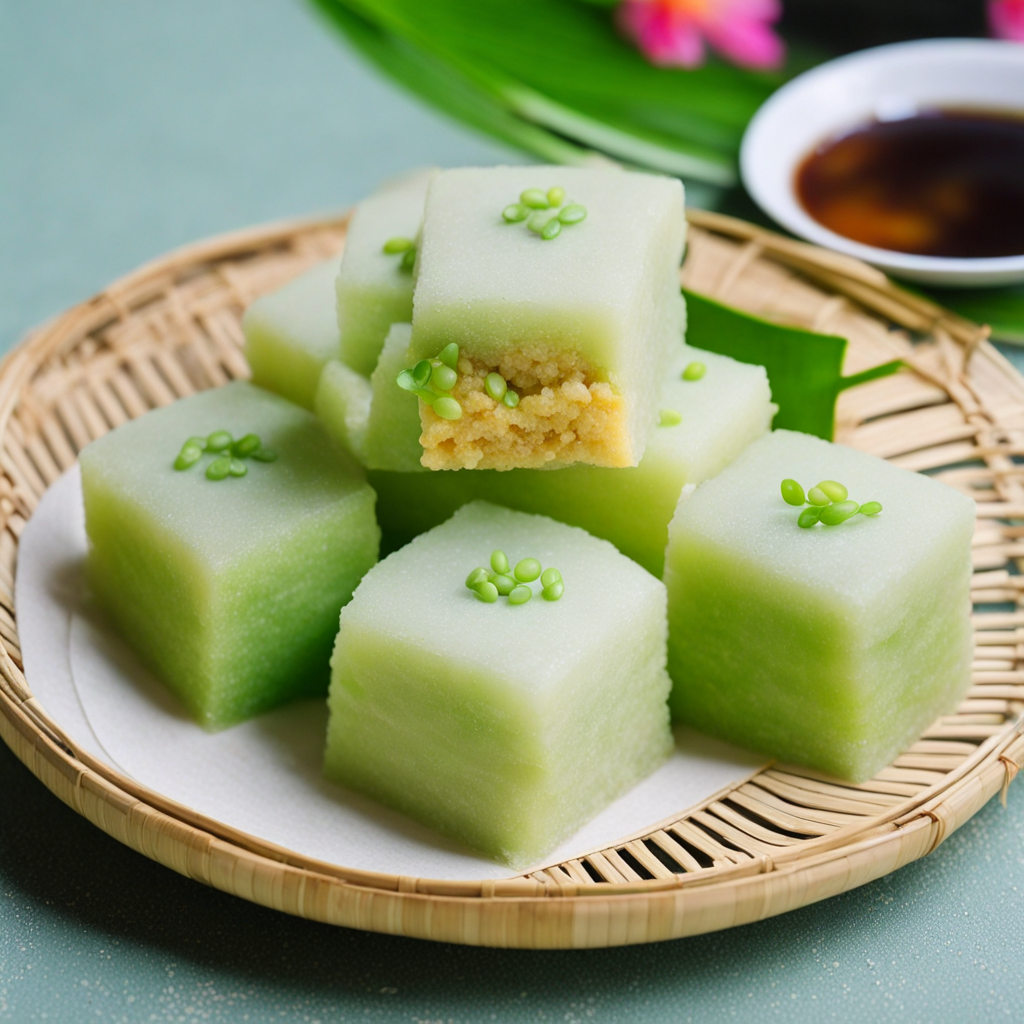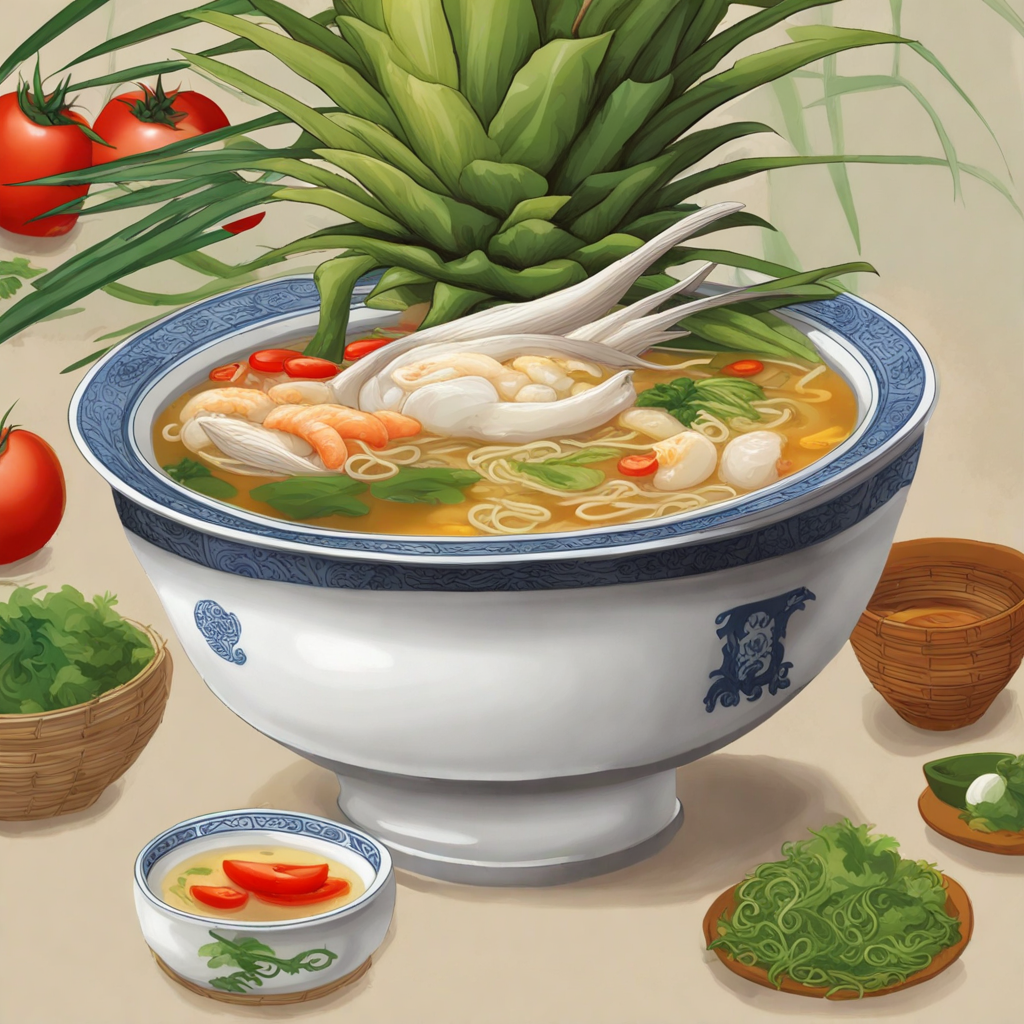Banh Cuon
Banh Cuon is a traditional Vietnamese dish that beautifully showcases the art of rice flour. The dish consists of delicate, thin rice pancakes that are steamed to perfection, creating a soft and slightly chewy texture. These pancakes are typically filled with a mixture of minced pork, wood ear mushrooms, and shallots, offering a delightful contrast of flavors and textures. The subtle sweetness of the rice and the savory filling combine to create a harmonious taste that is both comforting and satisfying. Often served with a side of nuoc cham, a tangy dipping sauce made from fish sauce, lime juice, and sugar, Banh Cuon elevates the eating experience. The dipping sauce adds a burst of flavor that complements the dish's inherent sweetness. Fresh herbs such as cilantro, mint, and cucumber are commonly served alongside, enhancing the freshness and providing a crunchy element that balances the softness of the rice pancakes. Banh Cuon is not just a meal; it's an experience that reflects Vietnamese culture and culinary traditions. It's often enjoyed as a breakfast dish, offering a light yet fulfilling start to the day. The dish is typically prepared in a communal setting, bringing families and friends together to savor this delightful Vietnamese specialty. With each bite, you will discover layers of flavor and texture that make Banh Cuon a must-try for anyone looking to explore the diverse and rich landscape of Vietnamese cuisine.
How It Became This Dish
The History of Bánh Cuốn: A Culinary Treasure of Vietnam Origin and Early Beginnings Bánh cuốn, a beloved Vietnamese dish, embodies the rich tapestry of the country’s culinary heritage. The name “bánh cuốn” translates to “rolled cake,” which aptly describes the dish's appearance and preparation. Its origins can be traced back to the northern regions of Vietnam, particularly in Hanoi, where rice has long been a staple food. The history of bánh cuốn is steeped in the cultural practices of the Vietnamese people. It is believed that the dish evolved from the traditional rice-based dishes that have been consumed in the region for centuries. The use of rice flour to create delicate, thin sheets is a technique that has been passed down through generations. This method can be linked to the ancient practice of making rice noodles, which dates back to earlier dynasties in Vietnam. Bánh cuốn is thought to have emerged during the 19th century, around the time of the Nguyễn Dynasty (1802–1945). During this period, culinary practices began to reflect a fusion of regional flavors, influenced by trade and interactions with neighboring cultures. The dish likely evolved from the tradition of making bánh, a general term for various types of cakes and pastries in Vietnam. Bánh cuốn, with its soft, translucent rice sheets, represents the refinement of this culinary art. Cultural Significance Bánh cuốn holds a significant place in Vietnamese culture, particularly in the context of family and communal dining. It is often prepared in homes during family gatherings and festive occasions, symbolizing unity and the sharing of good fortune. The act of rolling bánh cuốn can be seen as a bonding experience, as families come together to create this dish, often sharing stories and laughter in the process. The dish is not only a staple in Vietnamese households but also a highlight in street food culture. In bustling cities like Hanoi, vendors serve bánh cuốn from small stalls, showcasing the vibrant spirit of Vietnamese gastronomy. The dish’s popularity extends beyond the borders of Vietnam, with Vietnamese communities around the world celebrating its flavors. Serving bánh cuốn to guests is a way of honoring and sharing Vietnamese culture, making it a symbol of hospitality. Ingredients and Preparation The traditional preparation of bánh cuốn involves a few key ingredients: rice flour, water, and sometimes tapioca flour. The mixture is steamed in thin sheets, creating an ethereal texture that is both light and flavorful. The filling typically consists of seasoned ground pork and wood ear mushrooms, often enhanced with the addition of shallots. This combination of ingredients contributes to a complex flavor profile that is both savory and satisfying. The process of making bánh cuốn is an art form in itself. Once the rice batter is prepared, it is spread on a flat surface and steamed until cooked, then carefully rolled around the filling. The finished product is often topped with crispy fried shallots and served with a dipping sauce known as nước chấm, made from fish sauce, lime juice, sugar, and garlic. Fresh herbs and vegetables, such as mint and bean sprouts, are also typically included, adding freshness and texture to the dish. Development Over Time Throughout the 20th century, bánh cuốn continued to evolve, adapting to changing tastes and ingredients. The post-war period, particularly after the Vietnam War (1955–1975), saw a resurgence in interest in traditional Vietnamese cuisine. As the country opened up to the world, there was a renewed appreciation for regional dishes like bánh cuốn, leading to its popularization in both urban and rural areas. The 1980s and 1990s marked a significant turning point for bánh cuốn as Vietnam underwent economic reforms known as Đổi Mới. During this time, the culinary landscape expanded, introducing new flavors and techniques. Bánh cuốn began to feature variations, incorporating regional ingredients and styles from different parts of the country. For instance, in southern Vietnam, bánh cuốn may be paired with a thicker sauce or served alongside grilled meats, showcasing the diversity of Vietnamese cuisine. In more recent years, bánh cuốn has captured the attention of international food enthusiasts. As Vietnamese cuisine gained global recognition for its balance of flavors and emphasis on fresh ingredients, bánh cuốn emerged as a dish that could represent the essence of Vietnamese culinary identity. This newfound popularity has led to the establishment of bánh cuốn restaurants and specialty shops around the world, where chefs experiment with traditional recipes while honoring their roots. Modern Interpretations Today, bánh cuốn continues to thrive, with chefs and home cooks alike experimenting with new variations. Some embrace vegetarian versions, substituting the traditional pork filling with mushrooms, tofu, or a mix of vegetables. Others play with the presentation, serving bánh cuốn in innovative ways, such as in bowls or as part of a larger meal. In addition, bánh cuốn has found its way into fusion cuisine, appearing on menus alongside other global dishes. This creative adaptation speaks to the versatility of the dish and its ability to resonate with diverse palates. The dish's delicate nature and unique flavors make it an appealing choice for food lovers seeking authentic culinary experiences. Conclusion Bánh cuốn is more than just a dish; it is a reflection of Vietnam's rich cultural heritage and culinary evolution. From its humble beginnings in the northern regions to its current status as a beloved street food staple, bánh cuốn continues to capture the hearts and taste buds of people around the world. The dish embodies the spirit of Vietnamese cuisine—fresh, flavorful, and deeply rooted in tradition. As bánh cuốn continues to evolve, it serves as a reminder of the importance of food in bringing people together, celebrating cultural identity, and embracing the past while looking toward the future. Whether enjoyed at a bustling street stall in Hanoi or prepared lovingly at home, bánh cuốn remains an enduring symbol of Vietnam’s culinary legacy, inviting everyone to savor its delicate flavors and rich history.
You may like
Discover local flavors from Vietnam


